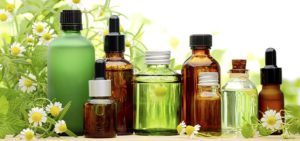Our Handmade Soaps, and other handmade products, contain NO genetically modified oils (GMO). Buy with confidence, you are not supporting the “engineered food industry”. Soap makers that use conventional soybean oil and/or corn oil are not only using inferior oils, but are also supporting an industry that genetically modifies products and may be putting small farmers out of business. Google: “Genetically Modified Foods” and see for yourself if you feel comfortable supporting the GMO industry.
We add no Parabens, sodium lauryl sulfate (or similar), unnatural preservatives, or petroleum products to our soaps. All soaps are vegan except “Goat Milk Soaps”, and “CinnaBee”(contains Honey and Beeswax).
General Base Oil ingredient explanation: Why do we use the oils we use in soaps? What are the benefits?
Olive Oil: A traditional emollient used in soap because it is mild and gives a “moisturized feel” to the soap. Can get a bit sticky sometimes. Olive oil is imported generally from Spain and the European region.
Sunflower Oil: Very similar to olive with a lighter/cleaner feel to it. Can have a tendency to get “sticky” but the skin feels oh so nice when sunflower is used. We would use sunflower more, but too much can make the soap soft.
Shea Butter: Makes a creamier bar with a more “moisturized feel”. Too much shea butter can make the soap sticky and reduce lather. With sensitive skin, reduced lather can be a good thing, so shea butter can be a real assistant, but in the end this has to be “in balance” with the rest of the soap.
Organic Palm: When we use palm, we use organic “sustainable” palm, for the reasons of deforestation in tropical regions (see below for further explanation). Palm and similar, are pretty much necessary to make a harder, stable bar of soap that is appealing to the population majority.
“The Palm Oil” controversy and our thoughts… Over the past few years, “bio-diesel” (and the need for edible non-hydrogenated oils) has created a huge demand for oil… palm oil. Palm oil is only harvested significantly in tropical (rain forest) regions and thus… the problem. More demand for “palm oil” means more deforestation. When we became aware of this issue several years ago, we switched to an “organic palm oil” which is a renewable and sustainable resource. Our organic palm will not as likely contribute to the “palm thirsty” industry which ultimately demands more deforestation and is farmed organically thus not polluting the land. Much more could be said, but that is the brief explanation.
Coconut: One word… Lather. Coconut adds to hardness and creates “big bubbles” in soap. A little goes a long way, too much can be “too effective”.
Hemp: We use unrefined hemp to avoid chemical contamination possible in the refining process. It also gives a nice natural aroma to the soap. Hemp oil adds a unique skin feel and moisturizing effect.
Essential Oil and Natural Fragrance Explanation:
Essential Oil is a naturally derived plant fluid (usually by distillation of the plant) extracted from bark, leaf, or petals of the plant. Essential oil is usually a “pure”, single plant oil, example “Patcholi essential oil” will be from the “Patchouli” leaf. The FDA has noted that these must be listed separately on labels or they should be called “fragrance”. In other words if you make an all natural essential oil blend, it doesn’t matter, they still have to be called “fragrance” if not listed separately. Since our suppliers utilize essential oils and other natural raw materials to make our certified natural blends, they do not wish to disclose every ingredient, so, our way of doing this is calling them Certified Natural Fragrance, since this informs the consumer that it is indeed of natural origin, if/when applies. If an individual does not care either way, we have a great deal of soaps that have lab created aroma chemicals also in them to “enhance” the aroma. These fragrances will simply be called “fragrance” and the “certified natural” will be dropped as a qualifier.
What is “Fragrance”?
This is an ambiguous title used to note any amount of aromatic chemicals used (natural and/or unnatural origin) to create an aroma for a product. When a list of ingredients is not disclosed individually, a manufacturer must list as “fragrance” or “fragrance oil”. As noted above, when we use aromatic elements of natural origin, we note these on the ingredients in order to inform the consumer the difference. If “certified natural” is not noted, the fragrance may contain some synthetic chemicals.We use only cosmetic “skin safe” fragrances in any case, though different skin types react differently. For example, some skin will be OK with natural cinnamon oil in soap while some will sense irritation and even “burning” feeling. It has been suggested by some that synthetic fragrances are to blame for skin irritation. This may or may not be true for the “majority” but each individual has to determine what works for them and in either case essential oils and fragrances are all extremely strong chemicals that should not be overused.
